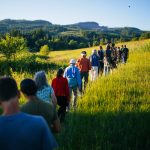It’s About Time – December 2015
Early morning sun comes through a south window these days, blinding me when I read the paper. In summer the blinding morning sun shines through a window about ten feet north. The two windows create a seasonal sundial. Sunny mornings are pretty scarce this time of the year, even when days end up sunny. By sunset the the air is filled with moisture. Cool nights and a chilly dawn turns moist air into dense fog in the valley floor. Only after the sun warms the fog banks late in the morning does a sunny day show its predicted blue skies. Continue reading
